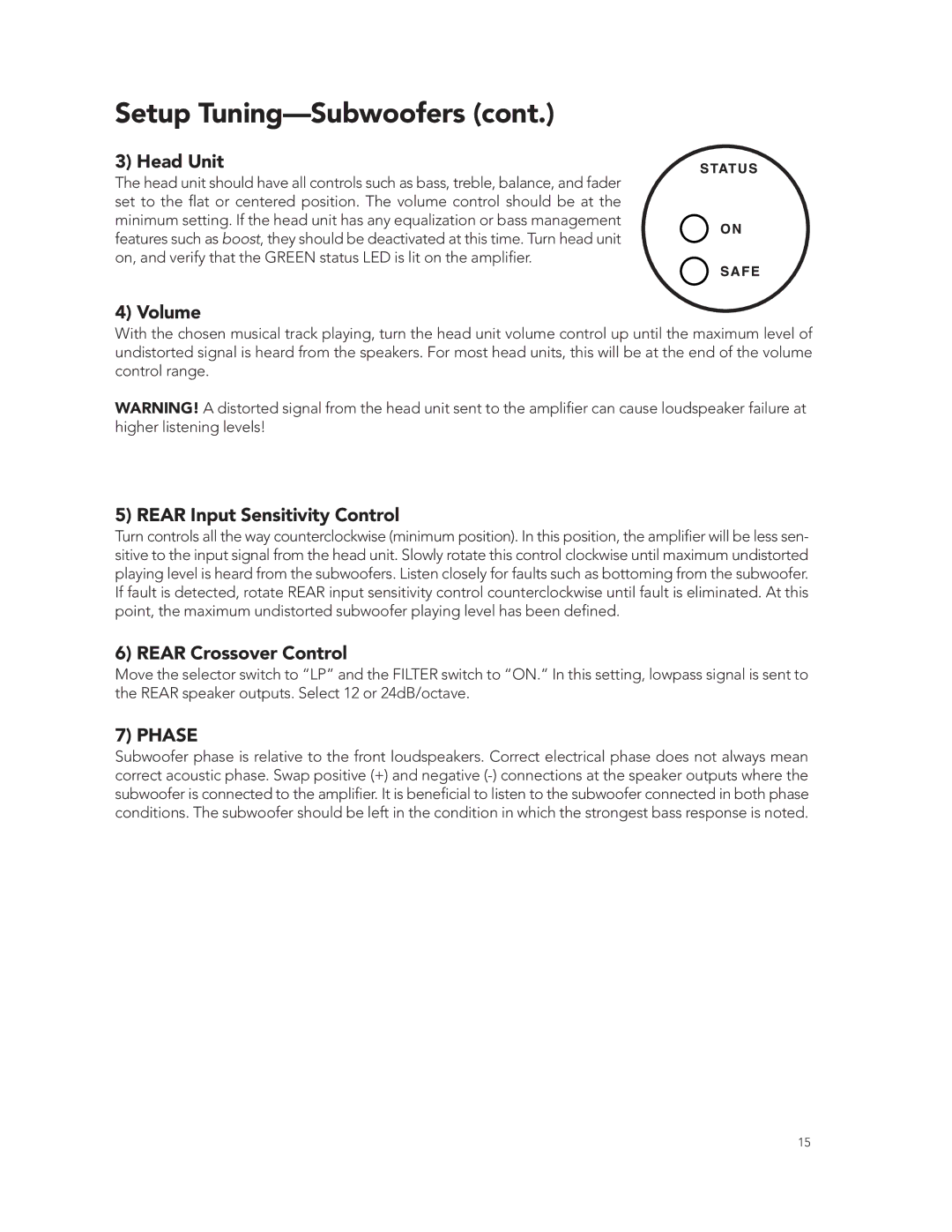
Setup Tuning—Subwoofers (cont.)
3) Head Unit
The head unit should have all controls such as bass, treble, balance, and fader set to the flat or centered position. The volume control should be at the minimum setting. If the head unit has any equalization or bass management features such as boost, they should be deactivated at this time. Turn head unit on, and verify that the GREEN status LED is lit on the amplifier.
4) Volume
With the chosen musical track playing, turn the head unit volume control up until the maximum level of undistorted signal is heard from the speakers. For most head units, this will be at the end of the volume control range.
WARNING! A distorted signal from the head unit sent to the amplifier can cause loudspeaker failure at higher listening levels!
5) REAR Input Sensitivity Control
Turn controls all the way counterclockwise (minimum position). In this position, the amplifier will be less sen- sitive to the input signal from the head unit. Slowly rotate this control clockwise until maximum undistorted playing level is heard from the subwoofers. Listen closely for faults such as bottoming from the subwoofer. If fault is detected, rotate REAR input sensitivity control counterclockwise until fault is eliminated. At this point, the maximum undistorted subwoofer playing level has been defined.
6) REAR Crossover Control
Move the selector switch to “LP” and the FILTER switch to “ON.” In this setting, lowpass signal is sent to the REAR speaker outputs. Select 12 or 24dB/octave.
7) PHASE
Subwoofer phase is relative to the front loudspeakers. Correct electrical phase does not always mean correct acoustic phase. Swap positive (+) and negative
15
